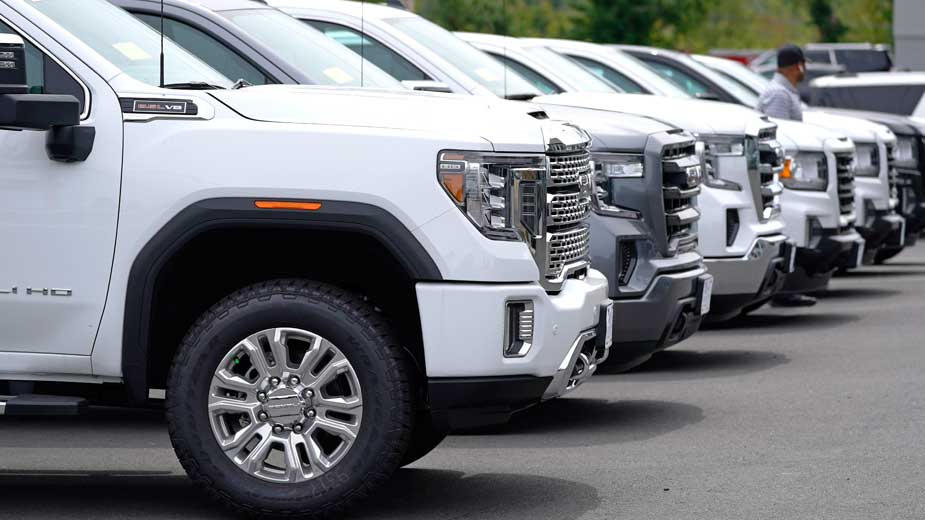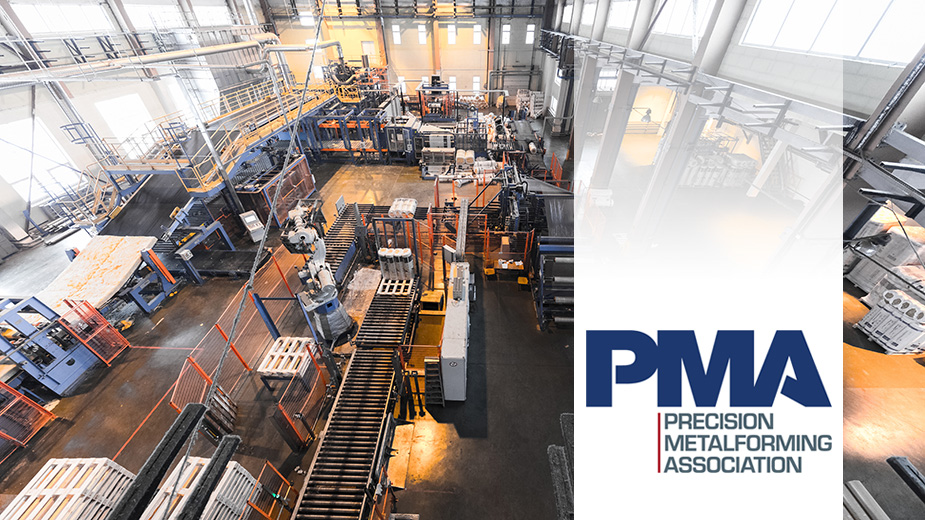Fraternity of Bridge Painters Spans Culture and Craft
CAMPBELL, Ohio – It’s 10:30 a.m. on a Wednesday in March, and a group of older men sip coffee around the small counter in the brightly lit Hellenic Prodromos Hall on 12th Street in Campbell. Within 15 minutes, others trickle in, take a seat at a nearby table, and begin playing a game of cards.
Their Greek accents are thick, even after residing in the United States for more than 50 years. They belong to a certain fraternity – a brotherhood that in many ways is stronger than the cultural bonds of the old country. And all of them have spent their adult lives painting bridges.
“I’ve painted every bridge in Philadelphia,” begins Tony Kostalas, a retired industrial painter who joined his compatriots that morning. “To me, it was just like walking on this floor,” he says, taking a few steps forward.
Others such as Steve Tilikos say he’s dangled more than 1,000 feet above the ground while painting broadcast towers. “I was OK with it,” he shrugs.
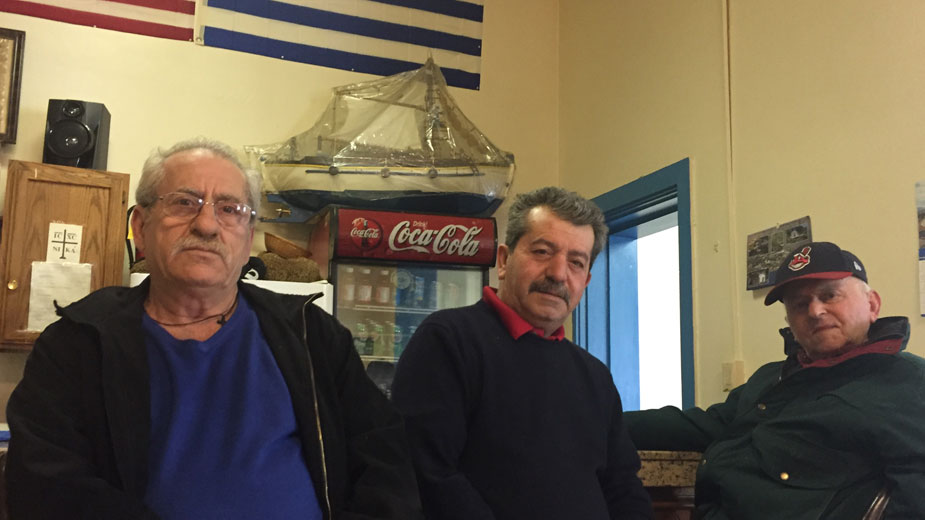 Steve Tilikos, Antonis Saragias and Taso Fdmiou share coffee at the Hellenic Prodromos Hall in Campbell. All are retired bridge painters. The city of 8,000 is said to have the second highest concentration of residents with Greek ancestry.
Steve Tilikos, Antonis Saragias and Taso Fdmiou share coffee at the Hellenic Prodromos Hall in Campbell. All are retired bridge painters. The city of 8,000 is said to have the second highest concentration of residents with Greek ancestry.
Perry Malactaris recalls the first day he stared down from a 500-foot perch atop the suspension towers of the George Washington Bridge in New York City, overlooking the rushing traffic below.
One mistake, one distraction, one split-second miscalculation, he thought, could cost him his life.
“Everybody’s a little scared the first time,” he says. “In the beginning, you feel like you’re tied up inside. But after a while you get used to it.”
Get used to it he did. Malactaris spent the next 45 years in the industry, painting structures across the United States with two industrial painting companies based in the Mahoning Valley.
Demand for bridge painters is high, since the job is skilled and requires a certain type of person to perform the daunting tasks. Painting bridges is necessary to prevent corrosion on the structures, and across the country, many bridges are in need of repair.
According to the American Society of Civil Engineers, the United States has 614,387 bridges, 39% of which are 50 years or older. Of that total, 9.1% are rated structurally deficient. The most recent cost estimates by the federal government stand at more than $123 billion to fully rehabilitate the backlog of bridges in need of repair – and painting.
Perhaps there is no community in the country that embraces the craft of bridge painting more than the Greek population of Campbell, which has remained tight-knit and resilient amid the economic upheavals endured by the Mahoning Valley.
Equally as resilient is the industrial painting industry across the region. Many of these companies are owned and operated by those who immigrated to the United States from Greece or their children.
The transition to the painting industry wasn’t particularly difficult for Greeks in Campbell, explains Louis G. Lyras, president and owner of Corcon Inc., an industrial painting company based in Coitsville Township that specializes in bridge restoration. “A lot of the islanders who came to Campbell were working on ships – on sailing vessels or the merchant marine. They were constantly engaged in fishing, shipping or sponge diving,” he explains.
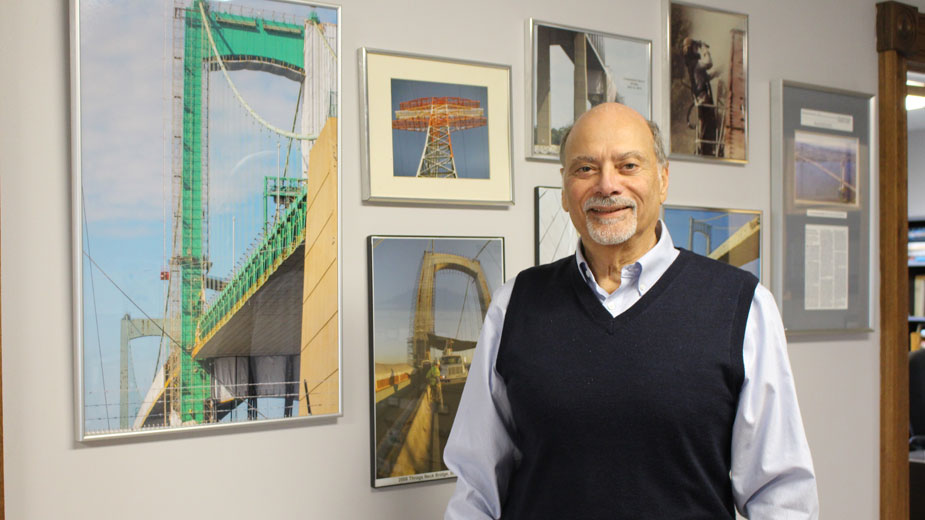 Lou Lyras says many of the Greeks who immigrated to Campbell came from that nation’s islands and worked on ships.
Lou Lyras says many of the Greeks who immigrated to Campbell came from that nation’s islands and worked on ships.
Thus the shipping industry in Greece also laid the groundwork for a new craft in the Mahoning Valley, Lyras says: “My grandfather came here in 1912 and he worked on wood-hulled ships. He knew how to rig, he knew how to climb, and they were constantly painting their ships.”
Climbing and rigging are core skills used in industrial bridge painting, Lyras says, so it was natural that the industry developed in Campbell. “That’s why you see such a large concentration here. My uncles were in the business during the 1920s and the ’30s, and when my father came over, he worked with his cousin or uncle. I grew up in this industry as part of chain migration,” he says.
Still, Lyras says painting bridges wasn’t always his calling.
“I graduated from Ohio State with a degree in biology,” he says, noting some of his classmates ended up working for the Environmental Protection Agency. “I could have gone into teaching or that type of work, but it didn’t pay,” he laughs.
But bridge painting did pay. “I wanted to make more money, so I became a trade worker. I already knew the work, and started on my own in 1976,” Lyras says.
The result was Corcon Inc., a company that travels the country painting and restoring some of the most iconic bridges in the United States. Among them are the Walt Whitman and Benjamin Franklin bridges in Philadelphia, and the Verrazano Narrows and Throgs Neck bridges in New York City.
“Our work takes us everywhere and the pay is good,” he says. However, workers know they will be away from home for an extended period of time, in many cases several months.
Much of the bridge work today centers around preparation, Lyras says. Forty years ago, it wasn’t unusual for a contractor to commission a pickup truck, purchase the required tools of the trade and then start work in a matter of weeks after a contract was secured.
In 1985, however, the industry started to change drastically, Lyras says. The U.S. Environmental Protection Agency, as well as other regulatory agencies, began to enforce strict safety guidelines that impacted how bridge painters did their work.
“It was a pivotal time,” he says. “I welcomed these changes.”
The regulations were put in place to ensure the safety of both the workers and the public. Before any work can begin, a platform underneath the bridge is required to be engineered and built in order to catch any debris falling from the job during the blasting phase. Moreover, the entire work area must be covered or enclosed with a large tarp to prevent particles or fumes from escaping into the atmosphere.
Thus, it could take six to eight months – in some cases, more than a year, depending on the size and complexity of the project – before work could even begin on a bridge after a contract is awarded, Lyras says.
“We have to spend a lot of time engineering that containment system,” he says. “We’ve got to build giant scaffolding, huge floors and containment tarps that can withstand 40-to 50-mile-per-hour winds. That takes three months to do. The smallest part of the job now is painting.”
In 1988, before many of the regulations in place today were enacted, for example, Lyras secured a contract to paint the entire Benjamin Franklin Bridge for $3.5 million. “In 2004, we just did the middle part for $24 million,” he says, underscoring how the time and effort required today to engineer and construct safety platforms has impacted the cost of the work.
Stripping off the existing surface coating is no longer done with sand, Lyras continues. Instead, his company uses sophisticated machines able to blast steel grit onto metal surfaces and prepare for the new paint job. The steel grit, meanwhile, is recycled and used again, in some cases about 200 times.
The workforce of the industry has also changed, Lyras says.
“When I was growing up, our industry was composed of eastern European immigrants – Greeks, Slovaks, Croatians – those are the guys I worked with,” he recalls. Now, about 10% of the crews are of Greek ancestry, he estimates.
Today, young men and women have joined the trade, most of whom are Hispanic, he says. “We’re bringing in a lot of young people. The top guys in New York are making $160,000 a year. A kid just starting out could make $60,000 to $70,000 a year,” he says.
Still, the Greek community in Campbell remains tight and its adherence to the industrial painting industry is more pronounced than ever. While some of the companies have moved just outside the city limits, many of the workers and owners remain in Campbell.
For others, the craft helped open the doors to other professions and skills.
Campbell Finance Director Yanni Tiliakos says he spent weekends during high school and college as a bridge painter. “I would make $20 an hour in high school as a helper,” he recalls, and the money he earned during the summer was more than sufficient to pay his tuition at Youngstown State University.
His father owned a painting company in Campbell, but moved back to Greece during the 1970s where Tiliakos was born. The family returned to Campbell when he was 12.
“We could always have a decent paying job,” Tiliakos reflects. “And a lot of people my age are starting new painting businesses – the next generation is doing it.”
Manuel Frangos is a second-generation co-owner of Liberty Maintenance Inc., a Youngstown company that has tackled some of the most challenging bridge projects across the country.
“Like a lot of us in the industry, we grew up in the business and took over the company when our father retired,” he says.
His parents, John and Nomiki Frangos, established the company in 1986. Manuel and his siblings run the business today.
“Our parents – the first generation of Greek bridge painters – had a history of working dangerous jobs in Greece before coming to the United States,” he says. “The Greek population is not afraid of hard work.”
The company has painted structures such as the Verrazano Narrows in New York, the Whirlpool Rapids Bridge in Niagara Falls that spans the Niagara River, the Huey P. Long Bridge in Baton Rouge, La., the Aurora Bridge in Seattle and the Chesapeake Bay Bridge in Maryland.
“We’re working in Boston and Seattle right now,” he says.
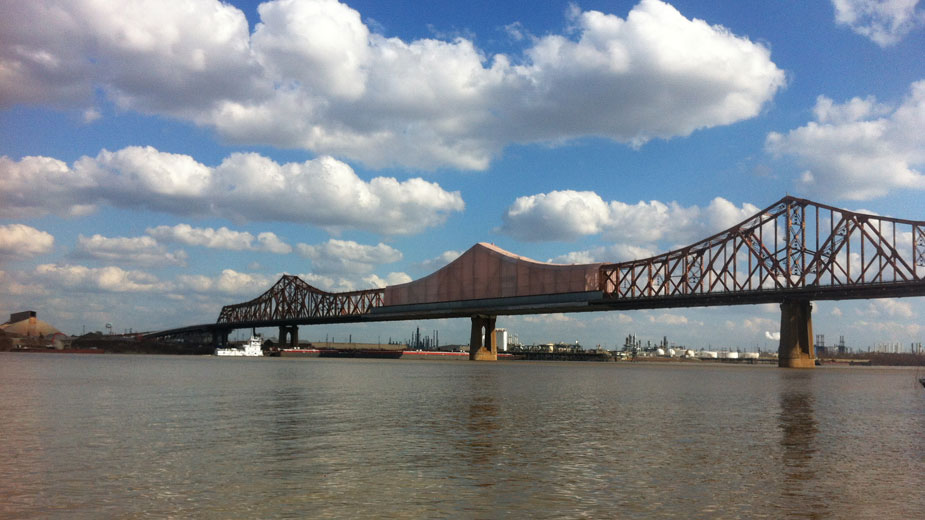 The tarp on part of the Huey P. Long Bridge in Baton Rouge, La., illustrates safety precautions in force today. The bridge was painted by Liberty Maintenance Inc.
The tarp on part of the Huey P. Long Bridge in Baton Rouge, La., illustrates safety precautions in force today. The bridge was painted by Liberty Maintenance Inc.
The number of workers the company employs at a single time often depends on the scope of the project, Frangos says. On average, the larger companies employ about 80 people, but on complex projects, that payroll could increase to about 200.
These jobs are difficult, dangerous, but essential. And in many ways, the industrial painting industry serves as a salve for Campbell, which was devastated by the loss of the steel industry, relates Father Steve Denas, pastor of Archangel Michael Greek Orthodox Church.
“The main reason for the large Greek population here was the steel industry,” he says. During the early 20th century, immigrants hailing from mostly southern and Eastern Europe arrived in the region and settled in communities such as Campbell because of regional or familial ties.
Most Greek residents here emigrated from the Dodecanese Islands in the southeastern Aegean Sea, Denas says – a heavy concentration from the island of Kalymnos. “It was an active immigration channel,” he says. “You needed a sponsor to come to this country.”
All was well as the steel industry boomed, Denas says. Plus, there were a handful of industrial painting companies operating in the Campbell-Youngstown area during the first half of the 20th century. “Once the mills closed they had to reinvent themselves and that’s what they did,” the pastor says.
Indeed, Denas says as membership in other ethnic churches across the Mahoning Valley declined over the past 40 years, Archangel Michael’s has not only remained stable but grown. “We have about 600 families,” he says. “There’s not been a decline. In fact, there’s been a small increase.”
Mainland Greeks from the Mahoning Valley, on the other hand, have relocated to other parts of the country, following a larger pattern of migration over the last 40 years, he says.
The Greek Island community in Campbell remains close. The city of about 8,000 boasts the second-highest concentration of residents with Greek ancestry of any city in the United States, second only to Tarpon Springs, Fla. “New York and Chicago have larger populations of Greeks, but Campbell has a higher percentage,” according to Denas.
Denas says he recently catalogued the number of industrial painting companies in the Mahoning Valley, the vast majority of which are owned by Greek families. “I counted 18 companies in Youngstown and Campbell,” he says. “They do this job because they want to.”
Campbell Mayor Nick Phillips says although many of the bridge contractors have moved their businesses outside city limits, the owners and workers still live here and pay income taxes. “The industry is really a blessing for us,” he says.
The industry also provided opportunity for Greek immigrants such as Ellias Koutsoubos, who arrived in Campbell in 1967. “We came from the old country. We didn’t speak very good English – even now, we don’t. We had to do something,” he says.
A position as an industrial painter, despite the danger, meant job security and great wages, Koutsoubos says. Even after one accident nearly killed him, he continued to paint until retirement.
“You gotta work, man,” he says. “I had a family. If you want to work, this country gives you the opportunity. You can do anything here.”
Pictured: A worker from Corcon Inc. leans over the Walt Whitman Bridge in Philadelphia. The project was featured in a documentary, “Bridge Brothers,” produced by Louis G. Lyras, president of the industrial painting company.
Related Coverage
Daily Buzz: Campbell, the Greeks and Bridge Painting
Copyright 2024 The Business Journal, Youngstown, Ohio.


